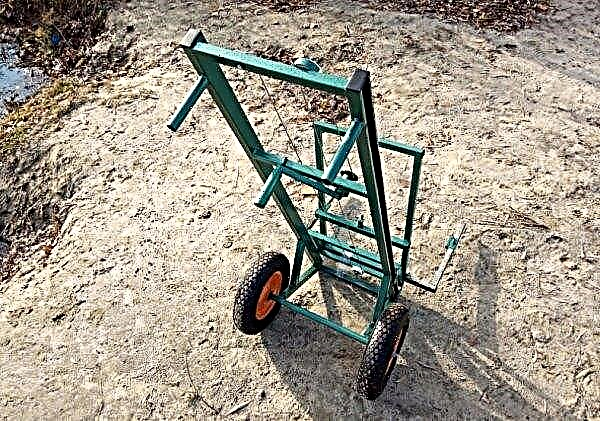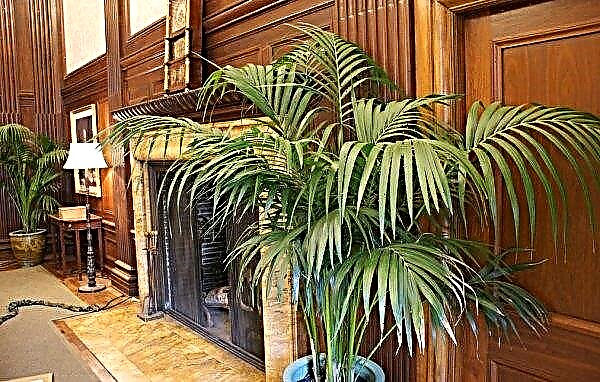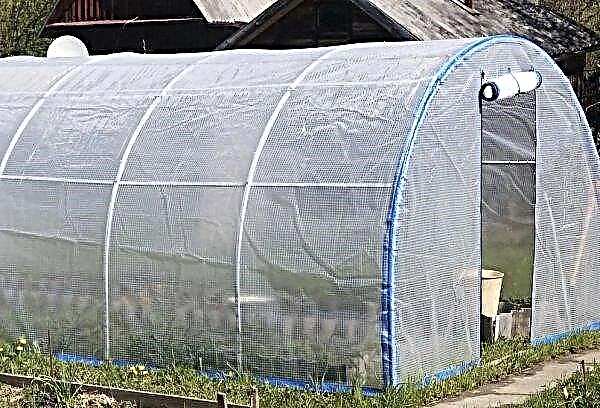It would seem that if you have your own plot with a house, then you can do anything on it. But it is not so. Any erection of the building must be coordinated with the neighbors and the BTI, as well as take into account existing standards for each building. This applies not only to capital structures (houses, sheds, chicken coops), but also to such structures as greenhouses. In our article, we will talk about the rules for the construction of greenhouses on the site.
Basic norms and rules for the distance from the greenhouse
When erecting a building on a site, it is necessary to be guided by sanitary norms and rules (SNiP). In them, polycarbonate greenhouses are classified as farm buildings, film - as a temporary building without a foundation.
Allowed distances from buildings to the fence, established by sanitary and fire safety standards:
According to SNiP, the distance between such structures and the fence, the border of the neighboring plot and the tree should be 100 cm. Between the greenhouse and your own house, as well as the neighboring one should be 300 cm. To the red line (the place of communication, the border of the plot) of the summer cottage - 500 cm, and to farm buildings in SNT or IZhS - 100 cm. In the event that an alley passes from the side of the site, the greenhouse should be located 300 cm from the fence passing along the border of the site and the road.
If the location of the fence is shifted to the courtyard, then 100 cm should be retreated from the fence, and 300 cm from the road and sidewalk in the alley. According to the same document, there should be a minimum of 600 cm between greenhouses that are operated all year round, and between seasonal ( from spring to autumn) - at least 150 cm.
Important! When installing a greenhouse, you need to take into account that in the neighboring area there should not be territory on which the shadow falls during the day.
The location of the greenhouse without breaking the rules
When planning the location of the greenhouse, it is necessary to take into account the form of ownership and the status of the land, so that the structure is placed by law.
Rules on land IZHS
If the site was allocated for individual buildings (IZHS), then according to the regulatory documents of SNiP, the distance between the fence and the greenhouse should be 100 cm, and between the house and the greenhouse - 300 cm.This building is not fire hazardous, so the specified distance will be enough.

It should be borne in mind that according to IZHS, target construction is carried out with capital buildings with permanent residence, therefore, when designing a house, it is necessary to provide not only its plan with the BTI, but also the site plan with the buildings.
Only a capital greenhouse (with a foundation, heated, made of glass) is introduced into this plan. Seasonal structures do not need to be registered in the BTI. Be sure to take into account the fact that rainwater and snow from the roof should not fall outside the site. In this regard, it is necessary to adjust the distance to the fence, taking into account the amount of snow falling.
Examples of improperly arranged greenhouses:
Features of the rules of non-profit cooperatives
The site may be located on the territory of non-profit gardening and country communities and cooperatives. Here all the rules and regulations are spelled out in the internal documentation (charter, etc.). This does not require a site development plan, and the requirements for its development are softer, but all the same, all the norms correspond to SNiPu, although they may have some differences.
These differences should be spelled out in the charter. If there are no marks, but according to the charter it is not clear what standards should be followed, then you need to contact the board of the cooperative for clarification. In the absence of the opportunity to obtain the necessary information (the board does not own it), you should be guided by the norms of SNiP described above.
Important! Nonprofit societies often do not bring communication to their homes; accordingly, there is no red line. Then, when building a greenhouse, you must rely on the following data: from the road, the curb — 500 cm, from a dirt road, sidewalk — 300 cm
Transparency of the fence in accordance with the norm
There is no single normative document regulating the height and transparency of the fence between neighboring sections. Here, the norms are established by the local government. They vary depending on the region, region, form of ownership. Usually fences are a fence 150 cm high and a minimum transparency of 30% on the side and back.

A blank fence with a maximum height of 200 m is possible in front of the site. Cooperatives can increase transparency to improve the conditions of use of the land for the garden. Regardless of the height and transparency of the fence, the greenhouse should be placed at a distance of 100 cm from it.
Features of arrangement by mutual agreement
If permission is received in the BTI for the construction of the greenhouse, then its location can be discussed with neighbors and an agreement is concluded with them that they are not opposed to the presence of this type of building on your site. This will make it easier to resolve further conflicts that may arise between you.
Did you know? In the south-west of England there is an artificial biosphere (greenhouse), which over 18 years of its existence has been visited by more than 6 million people. About one million different plants are brought here, brought from all over the globe.
But there is one caveat: even if your neighbor gave the green light to the construction, after some time the owner of the neighboring plot may change and he will not like such a construction location. With his claim, he can go to court, and in this case, the contract concluded with the previous owner will not be valid.
Therefore, in order to avoid conflict situations before concluding an agreement, you need to consider:
- The greenhouse should not create a shadow on the neighboring plot. The size of the shadow is determined from the calculation of the height of the structure.
- The construction should not limit the access of neighbors to their own facilities on the site and not create discomfort.
- Perform the construction according to the norms of SNiP, so that even if there are complaints against you, it is not possible through the court to prove the violation.

Errors in the construction of the greenhouse
Most often, such errors are made during the construction of greenhouses:
- Location Installation in a dimly lit place, in the shade of tall buildings and plants. It is necessary to install on the area illuminated during the day, in extreme cases, in the first half of the day. All tall buildings and plants should be located at a distance of 300 cm, so as not to create a shadow and at the same time protect from winds.
- Installation season. Mounting a structure from any material in wet and cold weather. This leads to deformation of the building. It is best to carry out work on sunny days when the air is warmed up to + 10 ... + 12 ° С.
- Design. The choice of collapsible and lightweight design. It is easier to install and can be carried, but it is less durable, strong and reliable compared to the all-frame version.
Did you know? The Dutch company Zonneterp plans to create an artificial closed ecosystem in which excess heat will be removed not through the windows, but through the watercourse in order to accumulate it and direct it to heating the structure. Excess moisture will condense and collect in the drinking water supply system.
If you plan to install a polycarbonate greenhouse, you must add another moment such as the angle of inclination of the sheet. If it gives glare, it means that light is reflected from the surface, and plants lack it.

Having made the mistakes described above, you will not be able to get a good crop or lose it altogether. In case of non-compliance with the standards, there is a high probability of being fined or summoned to court by a displeased neighbor. This will require additional financial costs. In addition, if serious violations are noted, you will have to transfer the building or demolish it completely.
From the foregoing, we can conclude that the construction of any building on the site is guided by certain rules and regulations. They are not complicated, so they are easier to follow than to deal with the possible consequences of their violation.












